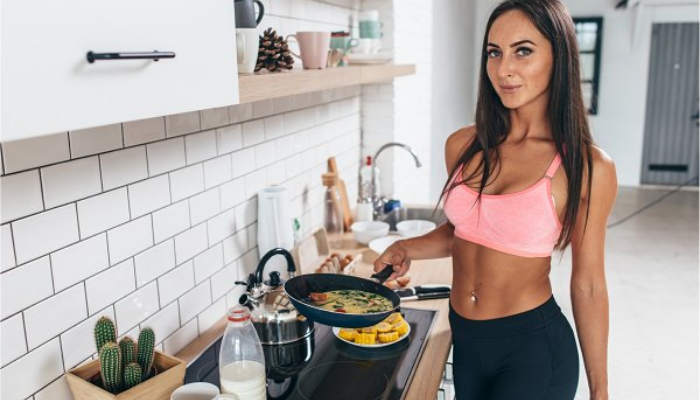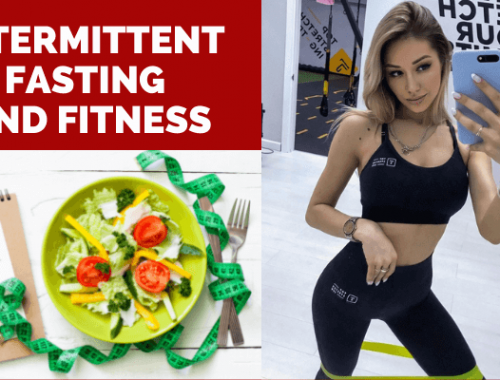
THE 7 BEST FITNESS FOODS AND TIPS FOR BUYING AND PREPARING
Contents
The best tips for buying the fitness foods you need, preparation methods and nutritional values. Tips that will help you get the most out of your benefits.
Major performance diets may seem complicated and sophisticated, but they are all built on basic principles and simple foods. Eat the right foods, and your body will respond accordingly. If your current diet doesn’t include the following, go straight to the grocery store and get them.
1. EGG WHITES
Show us a bodybuilder with no egg whites in his diet, and we’ll show you someone who is losing money and losing the best protein he can buy. In combination with oatmeal, an egg white omelet can turn your breakfast into an energy meal to feed the rest of your day.
Buy it: When buying eggs, do the basics: Always check the date and open the box to see if any are broken (source of poisoning). Also, make sure the eggs are refrigerated at the store and when you get home with them. Although eggs stored outside of the refrigerator may not necessarily cause illness, they lose one degree per day when not refrigerated.
Prepare it: While many appliances promise an easy way to separate the yolk from the white, the easiest and fastest method is to simply use your own clean hands. For this six-egg white omelet recipe, put six eggs in a medium bowl. Then, using your clean fingers, lightly pick up the yolks, remove them one by one, and discard. Using a fork or whisk, beat the egg whites with salt, pepper and any of your favorite herbs until well combined and some bubbles have formed on top. Spray a medium nonstick skillet with cooking spray. Turn heat to medium-high and add egg whites. After about 15 seconds, reduce heat to medium. Pull the edges of the omelet with a spatula and tilt the pan slightly so that the uncooked egg rolls under the cooked portion. Continue this around the perimeter until most of the uncooked egg disappears. Then fold the tortilla into thirds, as if you were folding a letter to fit into a business envelope. Carefully slide from the pan to a plate and eat immediately.
Nutrients: 99 calories, 21 g protein, 2 g carbohydrate, 0 g fat, 0 g fiber.
2. LEAN RED MEAT FILLETS
The chicken breast may be the quintessential bodybuilding staple, but lean red meat cuts are loaded with full protein and more strength when you’re trying to build more and more muscle.
Buy it: Always buy bright red steaks. If it is lighter in color or brown, it has begun to spoil. Try to find a steak or roast that is at least 1 inch thick with as little visible fat as possible.
Preparation: Preheat a grill to the highest heat setting. Remove all visible fat and cut the steak or roast into 4-6 ounce individual fillets. Season both sides of the meat with salt, pepper and/or a massage of spices or marinade. Place on the grill and cook 3-6 minutes per side or until ready to serve.
Nutrients: A 4-oz top sirloin steak has 138 calories, 24g protein, 0g carbohydrate, 4g fat, 0g fiber.
3. SALMON FILLETS
Salmon has protein as well as the additional benefits of (good) unsaturated fats. Some athletes are often deficient in fat, because they do very often in super low-fat diets. Including certain fish in your daily intake is one way to get the fats, at least the healthy kind.
Buy it: Atlantic Salmon is the most common variety in supermarkets, and is usually the most affordable. When fresh, it is bright orange in color and is not slimy or emits a bad odor. Always choose a thicker cut, since the tail does more than one workout when the fish is in the water, the meat near the tail is leaner.
Prepare it: Make sure all the bones are removed from the fillet (a «fillet» by definition is boneless, but sometimes there may be some lost). Preheat the oven to 400 degrees F. Place the 4.6 ounce fillet on a baking tray or pan, seasoned if desired. (To virtually eliminate cleanup, line the tray with aluminum foil before adding the salmon, so you can toss the foil after it cools). Bake for 10-14 minutes or until pink in the center.
Nutrients: A 4-oz (raw measure) serving has 207 calories, 23g protein, 0g carbohydrate, 12g fat, 0g fiber.

4. CHICKEN BREAST
Most gym users consume chicken breast on a regular basis, and why not? High in protein and ultra low in fat, its harmless poultry flavor makes it acceptable to almost everyone.
Buy it: Save money by buying skinless chicken breasts in bulk in the freezer section. Raw chicken is sure to be pink (not white, which would indicate freezer burn or improper refrigeration). Defrost at night in the refrigerator. Thawed chicken should not smell or be slimy.
Preparation: Preheat a grill to the highest heat setting. Remove all visible fat, and season or marinate with your favorite spices or sauce. Place chicken on hot grill (it should sizzle), then lower heat to minimum. Cook for 4-6 minutes, then turn and cook 4-6 minutes more, until no longer pink inside or with a thermometer stuck to the thickest part of the breast at 170 degrees F.
Nutrients: 6 ounces of breast has 205 calories, 38 g of protein, 0 g of carbohydrates, 4 g of fat, 0 g of fiber.
5. SWEET POTATO
A good body is not built by protein alone. Carbohydrates provide the energy you need to work hard. Sweet potatoes provide that appeal without overdosing your system with the simple, fast-acting carbohydrates. They are often used by bodybuilders looking to fill up exhausted muscles, but even if you are not getting ready for the stage, they are an excellent part of any diet or muscle-building strategy.
Buy it: Sweet potatoes come in two varieties: the white type are like regular baking potatoes; the dark ones have orange peel and dark flesh and are full of nutrients. When choosing a sweet potato, make sure it has a smooth, firm skin with no bruises or stains. It is better to choose small or medium-size sweet potatoes, which tend to taste better than jumbo.
Preparation: Preheat the oven to 350 degrees F. Rub the potato in cold water with a vegetable brush, making sure to remove all dirt. Dry, then chop it 5-6 times all over with a fork. Place directly on a lower oven rack and bake for about an hour (for an 8-12 ounce potato), or until smooth when pricked with a fork.
Nutrients: An 8-ounce sweet potato has 240 calories, 4g protein, 55g carbohydrate, 1g fat, 7g fiber.
6. PORK LOIN
Pork is often rejected by diet purists, and what a shame. Not only is it tastier than chicken, but some cuts are almost as low in fat, while still offering the required protein potency. Pork tenderloin is the most tender, as well as the leanest, part of the meat.
Buy it: Pork tenderloin is usually pre-packaged in plastic wrap in the meat section of the supermarket and is usually dated. Make sure the meat does not expire within a couple of days. Look for a loin that feels firm, lacks a lot of visible fat and cartilage, and has a pinkish tint. If it looks dry or even a little gray, don’t buy it.
Prepare it: Trim off all visible fat with a sharp knife. Marinate the pork in your favorite marinade for one hour in the refrigerator overnight, or smear it with your favorite spice. Preheat oven to 300 degrees F. Meanwhile, spray a skillet with nonstick cooking spray and high heat. Brown the meat, approximately one minute on each side, until well browned, then transfer to a baking dish and place in the oven until a meat thermometer reads 155 degrees F and the meat is pink only slightly inside, about 15-25 minutes.
Nutrients: A 4-ounce serving has 136 calories, 24g protein, 0g carbohydrate, 4g fat, 0g fiber.
7. SPARAGUS
Asparagus? Seriously, if you want to grow, your mom was right, you need vegetables. When it comes to greens, you have a lot of good choices. Broccoli and spinach are other highly recommended choices, but we chose asparagus for its quality and for helping us get rid of water. The best bodybuilders turn to asparagus as a meal when it comes to the crunch and they need it to get extra tight for the stage.
Buy it: If the spears are thin or thick, they should be bright green and free of stains and bruises. Sprouts at the tip should be tightly sealed, not withered. For best taste, consume within three days of purchase.
Preparation: Trim the base of each stem. If you have chosen thick stems with hard skin, it is better than peeling the base end with a vegetable peeler. Place a flat spear, then starting halfway between the tip and the base, peel to the end of the base. Turn the spear and continue peeling the bottom half until all parts are wide open and the base is about the same thickness as the tip. Select a pan wide enough to sit the spears flat, add 1 inch of water and a pinch of salt, and place on high heat until the water boils. Add the asparagus so that the tips all face the same end. Boil 3-4 minutes for fine spears (4-6 minutes for thicker ones), or until spears are crisp and tender. Remove and serve hot.
Nutrients: A 4-ounce serving has 27 calories, 3g of protein, 5g of carbohydrates, to less than 1g of fat, 2g of fiber.
I hope all these ideas help you, to better understand the article I would add that:
- 1 Degree Fahrenheit is 37.78 º C
- 1 Ounce is 28.35 grams
También te puede interesar

DIFFERENCES BETWEEN COMPLETE AND INCOMPLETE PROTEINS
diciembre 5, 2020
INTERMITTENT FASTING AND FITNESS
julio 3, 2021

